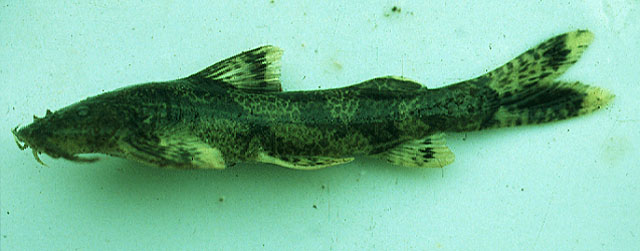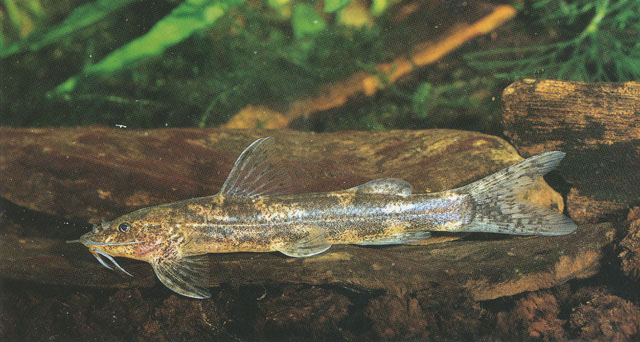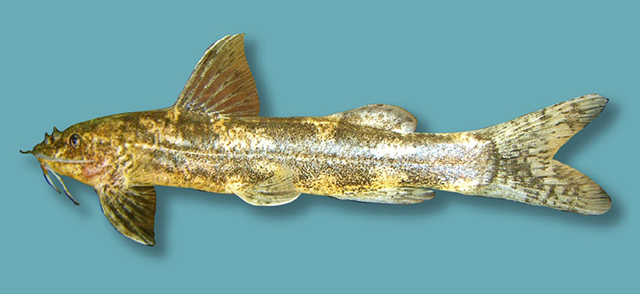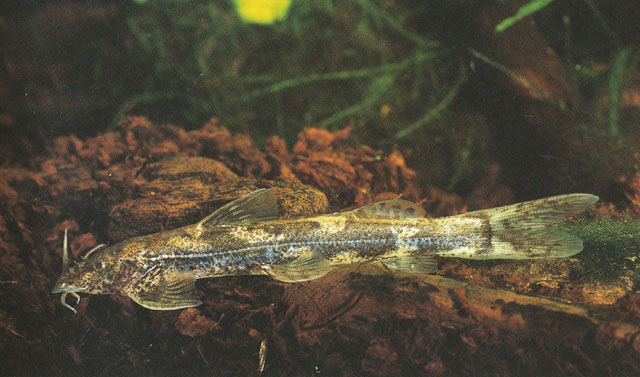Amphilius jacksonii Boulenger, 1912
Description
Dorsal spines (total): 0; Dorsal soft rays (total): 7; Anal spines: 0; Anal soft rays: 8 - 11; Vertebrae: 31 - 33. Diagnosis: Amphilius jacksonii is diagnosed from all other species of the Amphilius jacksonii complex by its more slender caudal peduncle, 4.8-7.9% of standard length vs. 8.1-12.3% (Ref. 103388). It is further distinguished from A. pedunculus, A. frieli, and A. crassus by its longer caudal peduncle, caudal-peduncle length 16.7-20.6% of standard length vs. 13.3-18.8%; and from A. frieli, A. crassus, and A. lujani by its more slender body, body depth at anus 9.6-13.2% of standard length vs. 13.5-17.4% (Ref. 103388). It is further distinguished from A. frieli by having fewer total gill rakers on the first gill arch, 6-9, rarely 10 vs. 10-11, rarely 9 or 12; and from A. ruziziensis by having a wider interorbital width, 26.7-32.0% of head length vs. 23.4-25.1% (Ref. 103388). It differs from other east and southern African species of Amphilius, including the wide ranging A. uranoscopus, in having fewer total vertebrae, a mode of 6+7 principal caudal rays, and a crenulated epidermal fold at the base of the caudal fin; the latter character is shared with A. platychir and at least some other west African Amphilius species (Ref. 51677). Amphilius jacksonii is further characterized by the following combination of characters (but not all unique): dorsal and pectoral spines absent; dorsal fin with 7 soft rays; short adipose fin not adnate with caudal fin; pectoral fin with 8-10 soft rays; anal-fin rays 7-10; forked caudal fin with rounded lobes; 31-33 free vertebrae; and variable, heavily mottled pigmentation (Ref. 51677). It is distinguished from other congeners in the Congo [=Zaire] River, except A. angustifrons and A. notatus, by having fewer total free vertebrae, 31-33 vs. 33-40; from A. angustifrons and A. notatus it is distinguished by fewer pectoral rays, 8-11, mode of 10, vs. 8-9, mode of 9; anal-fin rays, mode of 10 vs. 9; and mensural characters (Ref. 51677).
Common Names
Taxonomic Hierarchy
Kingdom: Animalia
Phylum: Chordata
Class: Teleostei
Order: Siluriformes
Family: Amphiliidae
Genus: Amphilius
Species: Amphilius jacksonii Boulenger, 1912
Climate Zone
Location
Biology
Rheophilic species; occurs in rivers and streams with moderate current and gradient (Ref. 51677). Mostly associated with upper drainages of rivers; in clear and well-oxygenated water (Ref. 27292). Generally associated with large rocks or mixed cobble and rock substrates (Ref. 51677). Carnivorous, feeds predominantly on benthic aquatic insects (Ref. 51677); insect larvae, worms and other invertebrates are taken (Ref. 27292). Iteroparous, with asynchronous ovarian development (Ref. 51677).
Habitat
demersal




